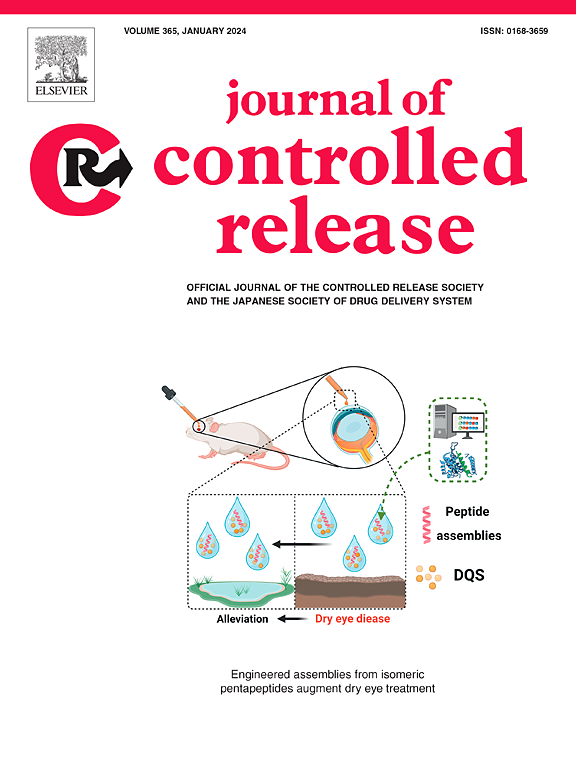Engineered vesicular cancer vaccines for immunosuppressive microenvironment reversion and in situ vaccine generation
IF 10.5
1区 医学
Q1 CHEMISTRY, MULTIDISCIPLINARY
引用次数: 0
Abstract
It is crucial to reverse immunosuppressive tumor microenvironment (TME) and effectively activate both cellular and humoral immunity in cancer immunotherapy. We have found that decitabine, an epigenetic regulator, can increase antigen exposure and induce double-stranded RNA (dsRNA) accumulation in tumor cells. The corresponding cell-derived nanovesicles (NV) have the ability to stimulate both cellular and humoral immunity due to the internal dsRNA. However, the efficacy of dsRNA-containing NV (dsRNA@NV) remains constrained by the inadequate activation efficiency of immune cells in immunosuppressive TME. In this study, CD40L, an immune cell regulator, was incorporated on the surface of dsRNA@NV (dsRNA@NVCD40L) through lentiviral transfection to further reverse the immunosuppressive TME, by activating dendritic cells and regulating macrophages phenotypes via CD40-CD40L interaction. In addition, CD40L could induce immunogenic death of tumor cells, and the administration of dsRNA@NVCD40L effectively elicited an in situ cancer vaccine response in B16-OVA tumor. This proposed NV-based vaccine was expected to solve the problems of low immunogenicity, insufficient activation of immune responses and lack of effective regulation of immunosuppressive TME of existing tumor vesicular vaccines.


求助全文
约1分钟内获得全文
求助全文
来源期刊

Journal of Controlled Release
医学-化学综合
CiteScore
18.50
自引率
5.60%
发文量
700
审稿时长
39 days
期刊介绍:
The Journal of Controlled Release (JCR) proudly serves as the Official Journal of the Controlled Release Society and the Japan Society of Drug Delivery System.
Dedicated to the broad field of delivery science and technology, JCR publishes high-quality research articles covering drug delivery systems and all facets of formulations. This includes the physicochemical and biological properties of drugs, design and characterization of dosage forms, release mechanisms, in vivo testing, and formulation research and development across pharmaceutical, diagnostic, agricultural, environmental, cosmetic, and food industries.
Priority is given to manuscripts that contribute to the fundamental understanding of principles or demonstrate the advantages of novel technologies in terms of safety and efficacy over current clinical standards. JCR strives to be a leading platform for advancements in delivery science and technology.
 求助内容:
求助内容: 应助结果提醒方式:
应助结果提醒方式:


